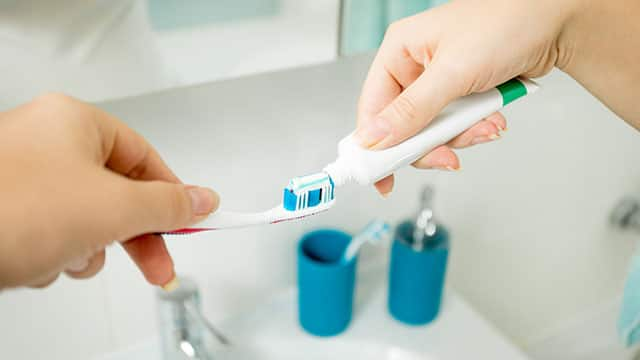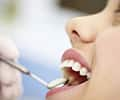Tooth enamel is the material on the outside of your teeth, right on top of the dentin layer. What is tooth enamel made of? Good question! It's made up of small segments called enamel rods. You can think of enamel as the skin of your teeth. Just as your skin protects your inner organs from harm, the enamel protects the interior parts of your teeth from harm. Here's what you need to know about enamel rods, the function of enamel rods, and how you can protect your enamel.
What Are Enamel Rods?
Imagine you have a high-powered microscope. If you were to zoom in on your tooth enamel, you'd see tiny keyhole or fish-shaped prisms that make up the enamel. An illustration from the University of Kentucky shows how these keyhole or fish-shaped pieces come together to form your enamel rods.
Guess what! Enamel is the hardest material in your body. And the arrangement and structure of the rods play a role in determining how crack-resistant the enamel is. For example, the rods' keyhole shape allows them to be packed closely together, without any gaps. This design helps keep the enamel from splitting and ensures that the surface of the tooth is smooth.
Protecting Your Tooth Enamel
Although your tooth enamel is the hardest substance in your body, it's not unbreakable. It can also wear down, which is why it's essential to protect your enamel.
When you break a bone, your body can create new bone material to heal the fracture and fix the bone. Skin, too, can create new cells to heal a wound. The bones and the skin can do this because the materials that make them up are living. However, enamel and enamel rods aren't living tissue. So, there's no way for the enamel to repair itself if it's worn, eroded, or chipped.
That means protecting your enamel is essential. Of course, that means keeping up with your oral care by brushing twice a day and cleaning between your teeth daily. Using fluoride toothpaste can also help reduce the risk of enamel erosion and tooth decay because it helps strengthen the enamel. You can also protect your enamel by staying clear of anything that causes wear and tear, such as habits (like grinding your teeth or chewing on ice cubes) or acidic foods.
If you feel like your diet or habits are potentially harming your enamel, talk to your dentist. They'll be able to guide you if you need to avoid or limit certain foods. They can also help you with a mouthguard to protect your enamel from grinding your teeth.
Now you know what enamel rods are and their function. And you even saw a microscopic view of your enamel rod structure. Incredible right? Their design doesn't just look fantastic; it also protects your teeth and keeps your enamel healthy. That being said, your enamel can wear down. So it's always important to protect it. That includes daily care, fluoride toothpaste, and avoiding habits or foods that might harm your enamel. If you feel like you need support in keeping your enamel healthy, see your dentist and dental hygienist right away. They'll help you keep your smile strong and healthy.
Oral Care Center articles are reviewed by an oral health medical professional. This information is for educational purposes only. This content is not intended to be a substitute for professional medical advice, diagnosis or treatment. Always seek the advice of your dentist, physician or other qualified healthcare provider.
ORAL HEALTH QUIZ
What's behind your smile?
Take our Oral Health assessment to get the most from your oral care routine
ORAL HEALTH QUIZ
What's behind your smile?
Take our Oral Health assessment to get the most from your oral care routine
Join Us
Get the best of your oral health routine and take it to the next level with expert advice, recommendations, products and solutions and special offers.
Join Us
Get the best of your oral health routine and take it to the next level with expert advice, recommendations, products and solutions and special offers.















